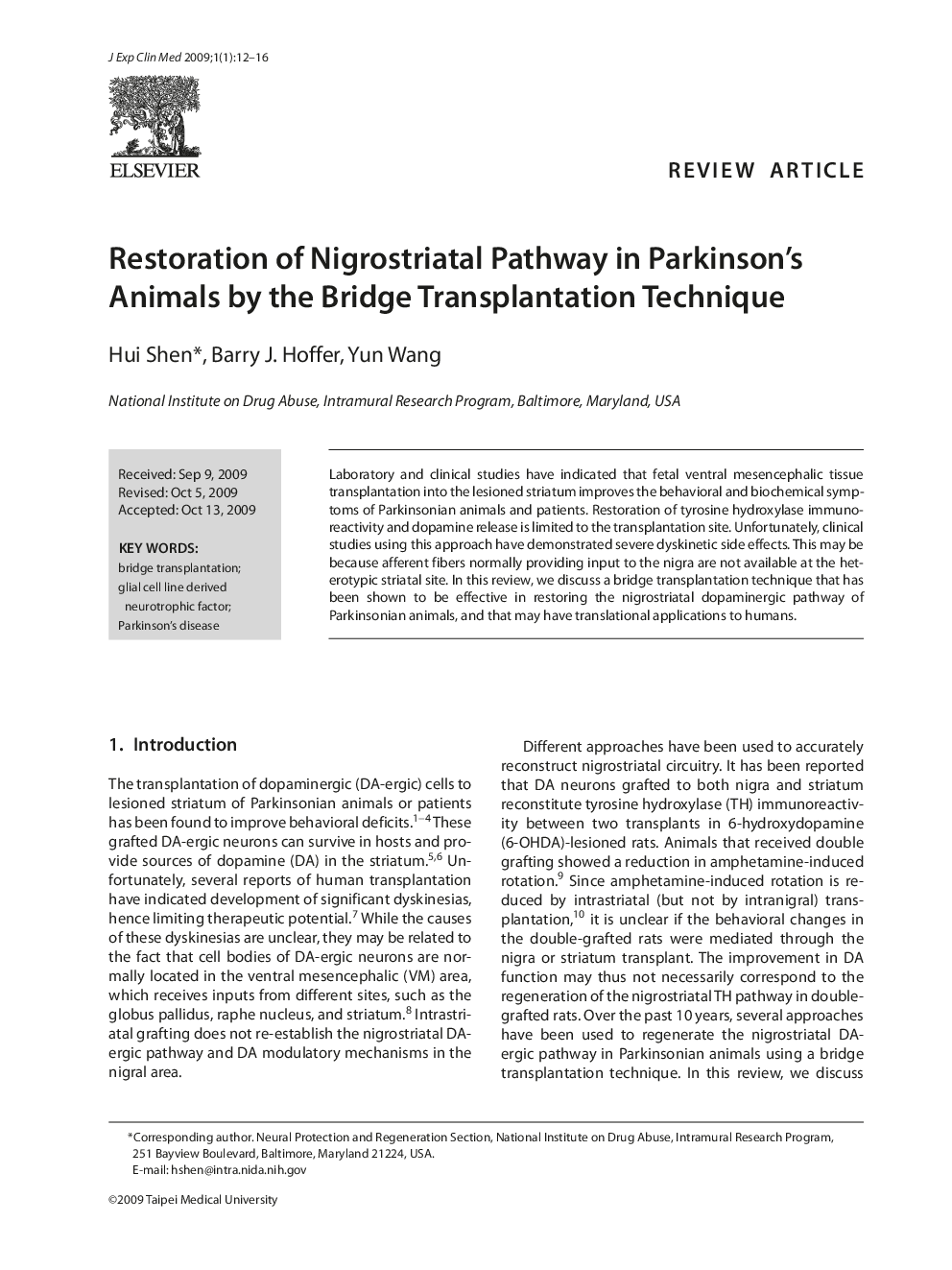| Article ID | Journal | Published Year | Pages | File Type |
|---|---|---|---|---|
| 3478143 | Journal of Experimental & Clinical Medicine | 2009 | 5 Pages |
Laboratory and clinical studies have indicated that fetal ventral mesencephalic tissue transplantation into the lesioned striatum improves the behavioral and biochemical symptoms of Parkinsonian animals and patients. Restoration of tyrosine hydroxylase immuno-reactivity and dopamine release is limited to the transplantation site. Unfortunately, clinical studies using this approach have demonstrated severe dyskinetic side effects. This may be because afferent fibers normally providing input to the nigra are not available at the heterotypic striatal site. In this review, we discuss a bridge transplantation technique that has been shown to be effective in restoring the nigrostriatal dopaminergic pathway of Parkinsonian animals, and that may have translational applications to humans.
